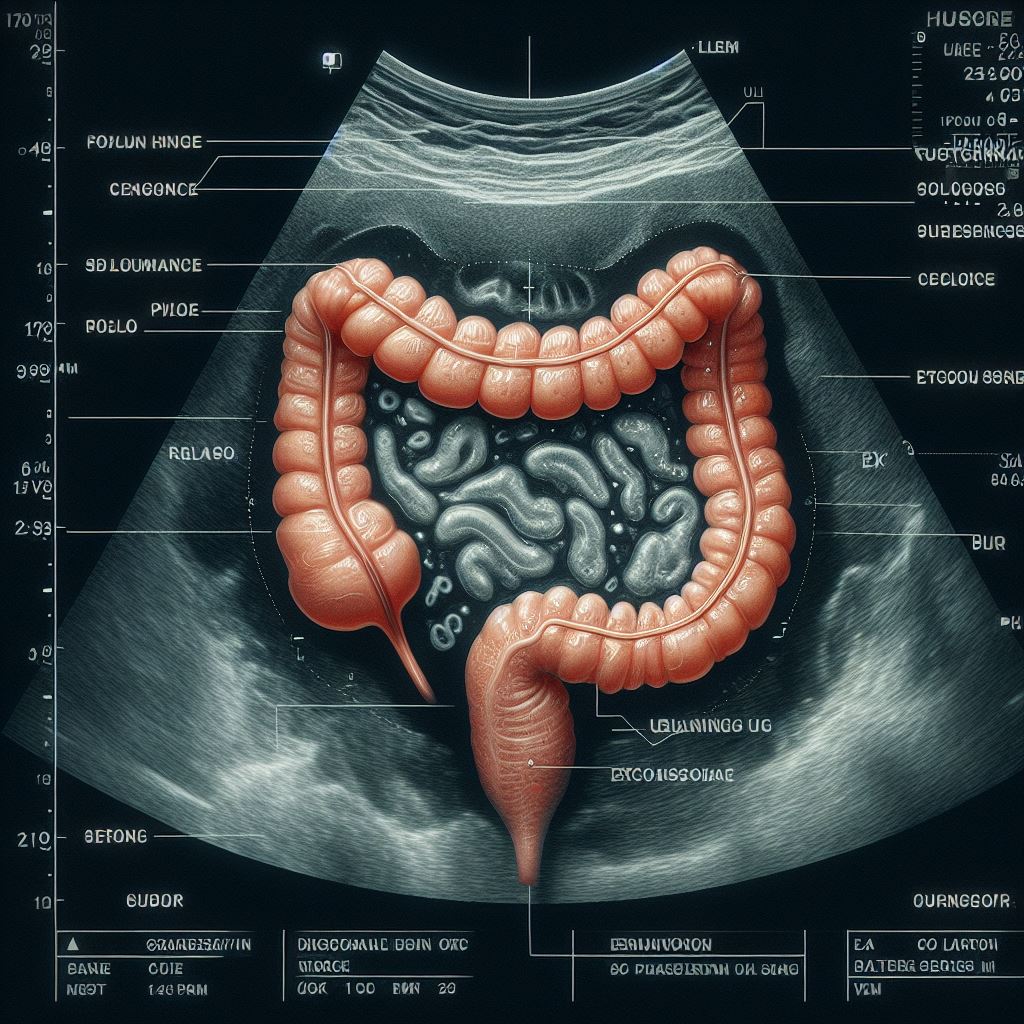Introduction
Pyloric stenosis is a condition that causes gastric outlet obstruction due to hypertrophy of the pyloric muscle. Ultrasound is the preferred modality to diagnose and measure the pyloric stenosis. Whatever the case may be, we’ve got you covered! In this article, we’ll explore the fascinating world of pyloric stenosis and how ultrasound plays a crucial role in its diagnosis and management. So grab a cup of coffee (or tea) and let’s dive right in!
Normal anatomy of the pylorus
The pylorus is a small but mighty part of our digestive system. Located at the junction between the stomach and the small intestine, it plays a crucial role in controlling the flow of food from one organ to the other. Understanding its normal anatomy is essential for accurate ultrasound evaluation.
The pylorus consists of two main components: the antrum and the canal. The antrum is located on the gastric side and serves as a reservoir for stomach contents before they are released into the intestine. The canal, on the other hand, connects directly to the duodenum and acts as a gatekeeper, regulating food passage.
When performing an ultrasound examination of this area, it’s important to have knowledge about these structures. By visualizing both components separately, we can assess their size, shape, and position relative to surrounding organs.
In terms of measurements, a healthy pylorus typically has an anteroposterior diameter ranging from 14mm to 16mm. Its length can vary between 10mm and 18mm. These numbers serve as guidelines for determining if there might be any abnormality present.
Having a clear understanding of normal pyloric anatomy helps us accurately identify deviations from baseline during ultrasound examinations. This knowledge allows us to make informed decisions regarding further investigation or intervention if necessary.
Ultrasound technique and patient preparation
Ultrasound technique and patient preparation play a crucial role in obtaining accurate and reliable imaging of the pylorus. Before the examination, it is important to explain the procedure to the patient or their caregiver, ensuring that they understand its purpose and what will be involved.
In terms of patient preparation, it is generally recommended that infants be fasting for at least 4-6 hours prior to the ultrasound. This allows for optimal visualization of the pylorus without interference from gastric contents. Fasting also helps reduce potential discomfort during the exam.
During the ultrasound, a high-frequency transducer is used on a gel-coated abdomen to obtain images of the pyloric region. The sonographer applies gentle pressure to visualize and measure various aspects of the pylorus accurately.
To optimize image quality, proper positioning is essential. The infant may need to lie on their back or side with their stomach exposed. It’s vital for both parent/caregiver and baby to feel comfortable throughout this process as any tension can affect image acquisition.
By following appropriate ultrasound techniques and ensuring proper patient preparation, healthcare professionals can obtain clear images necessary for diagnosing or ruling out pyloric stenosis effectively. Remember that each case varies slightly depending on individual circumstances; thus, flexibility in approach remains crucial in achieving accurate results!
Ultrasound findings of normal pylorus
Ultrasound findings of normal pylorus
When performing an ultrasound examination of the abdomen, it is important to assess the pylorus, which is the narrow passage that connects the stomach and small intestine. A normal pylorus should appear as a thin, tubular structure with smooth walls.
During the ultrasound examination, the sonographer will carefully scan through different angles to visualize the entire length of the pyloric channel. In a healthy individual, there should be no evidence of thickening or narrowing in this area.
The lumen of a normal pylorus appears as a smoothly tapering channel without any obstructions or irregularities. It should allow for easy flow of gastric contents into the intestines.
In addition to assessing its size and shape, other features such as peristaltic contractions can also be observed during an ultrasound. These contractions are responsible for propelling food from the stomach into the intestines and are normally seen in a regular pattern.
When evaluating an ultrasound image of Pyloric stenosis it’s crucial to compare it with known normal measurements and characteristics. This allows medical professionals to accurately identify any abnormalities and provide appropriate treatment if necessary
Ultrasound findings of pyloric stenosis
Ultrasound findings of pyloric stenosis can provide valuable insights into this condition. When performing an ultrasound, the sonographer will typically observe certain characteristic features that indicate the presence of pyloric stenosis.
One of the key ultrasound findings is thickening of the muscular wall of the pylorus. This can be visualized as a “donut sign” or “target sign” on transverse views, where there is concentric narrowing and thickening of the muscle layers. In addition, elongation and hypertrophy of the pyloric canal may also be observed.
Another important finding is lengthening of the pyloric channel. Normally, it measures less than 17mm in length; however, in cases of pyloric stenosis, it often exceeds this measurement due to hypertrophy and edema.
In addition to these findings, ultrasound may reveal gastric distention proximal to the narrowed pylorus. This occurs because food cannot pass through easily from stomach to intestines due to obstruction at the level of pylorus.
It’s worth noting that while ultrasound can accurately diagnose most cases of pyloric stenosis based on these findings alone, sometimes other imaging modalities such as upper gastrointestinal contrast studies may be performed for confirmation or further evaluation.
Understanding and recognizing these ultrasound findings play a crucial role in diagnosing and managing patients with suspected cases o
Pyloric stenosis ultrasound measurements
Ultrasound measurements play a vital role in the diagnosis and assessment of pyloric stenosis. When evaluating the pylorus, several key measurements are taken to determine if there is any narrowing or thickening present.
One of the primary measurements used is the pyloric muscle thickness. In a normal case, this measurement should be less than 3mm. Anything above that could indicate hypertrophy or thickening of the muscle, which is often seen in cases of pyloric stenosis.
Another measurement that is commonly taken is the length of the pylorus. Normally, it measures around 15-17mm in length. However, in cases of stenosis, this length can increase significantly due to the elongation and narrowing caused by an enlarged muscle.
In addition to these measurements, ultrasound can also assess for other signs such as delayed gastric emptying time and increased peristalsis seen within the stomach and duodenum.
It’s important to note that while these measurements are helpful in diagnosing pyloric stenosis, they should always be interpreted alongside clinical symptoms and other imaging findings for a comprehensive evaluation.
With advancements in technology and expertise in ultrasound techniques, accurate measurements can now be obtained with greater precision aiding clinicians in making an early diagnosis and providing timely intervention for patients with suspected pyloric stenosis.
Remember though! Proper technique and patient preparation are essential for obtaining accurate measurements during an ultrasound examination.
Ultrasound pitfalls and limitations
Ultrasound is a valuable tool in diagnosing pyloric stenosis, but like any medical imaging technique, it has its limitations and potential pitfalls. It’s important to be aware of these factors to ensure accurate interpretation of ultrasound findings.
One limitation of ultrasound is operator dependence. The quality of the images obtained can vary depending on the skill and experience of the sonographer. Small variations in probe placement or angulation can significantly affect the visualization of the pylorus.
Another potential pitfall is inadequate patient preparation. Proper fasting prior to the examination is crucial for optimal imaging. If a patient hasn’t fasted adequately, there may be residual stomach contents that can obscure visualization of the pylorus.
Additionally, anatomical variations can sometimes mimic pyloric stenosis on ultrasound. For example, an elongated or hypertrophied duodenal bulb may appear similar to a thickened pyloric muscle. Careful evaluation and correlation with clinical symptoms are necessary to avoid misdiagnosis.
In some cases, significant gastric distention or bowel gas can limit visualization of certain structures during an ultrasound examination. This makes it difficult to accurately assess the dimensions and appearance of the pylorus.
Despite these limitations and potential pitfalls, ultrasound remains a valuable diagnostic tool for evaluating patients suspected to have pyloric stenosis. When used properly by skilled operators and combined with clinical history and physical examination findings, it provides reliable information for diagnosis and management decisions.
Ultrasound differential diagnosis
Ultrasound Differential Diagnosis
When evaluating a patient with suspected pyloric stenosis, ultrasound is a valuable tool that can help differentiate it from other conditions. The differential diagnosis for pyloric stenosis includes various gastrointestinal disorders that can present with similar symptoms.
One important condition to consider is hypertrophic pyloric gastropathy. This rare congenital anomaly causes thickening of the entire pylorus, not just the muscle layer as seen in pyloric stenosis. Another condition to keep in mind is antral web, which appears as a thin membrane obstructing the gastric outlet.
Gastric duplication cysts may also mimic the appearance of hypertrophied pylorus on ultrasound. These cysts are usually multiloculated and have fluid-filled spaces within them. Other differential diagnoses include gastroesophageal reflux disease (GERD), duodenal atresia, and malrotation with midgut volvulus.
It’s crucial for radiologists to be familiar with these potential differentials and carefully evaluate all imaging findings before making a definitive diagnosis of pyloric stenosis. By considering these possibilities and utilizing ultrasound as a diagnostic tool, healthcare professionals can accurately identify and manage patients presenting with gastric outlet obstruction symptoms
Pyloric stenosis ultrasound follow-up and postoperative evaluation
Ultrasound follow-up and postoperative evaluation play a crucial role in the management of pyloric stenosis. After surgical intervention, it is important to monitor the healing process and ensure that there are no complications.
During the follow-up ultrasound, the sonographer will assess the surgical site for any signs of infection or fluid collection. They will also evaluate the pylorus to confirm that it remains open and has not re-narrowed.
In addition to visual inspection, measurements may be taken to assess pyloric diameter and muscle thickness. These measurements can provide valuable information about the success of surgery and help determine if further interventions are necessary.
The timing of postoperative ultrasounds varies depending on individual cases, but they are typically performed within a few weeks after surgery. Subsequent ultrasounds may be scheduled as needed based on clinical indications.
It’s worth noting that while ultrasound is an invaluable tool for assessing pyloric stenosis, it does have limitations. Other imaging modalities or additional tests may be required in certain scenarios to obtain a comprehensive evaluation.
Ultrasound follow-up and postoperative evaluation allow healthcare professionals to closely monitor patients with pyloric stenosis and ensure optimal outcomes following surgical intervention. By regularly assessing healing progress and addressing any potential issues promptly, we can improve patient care and minimize complications!


